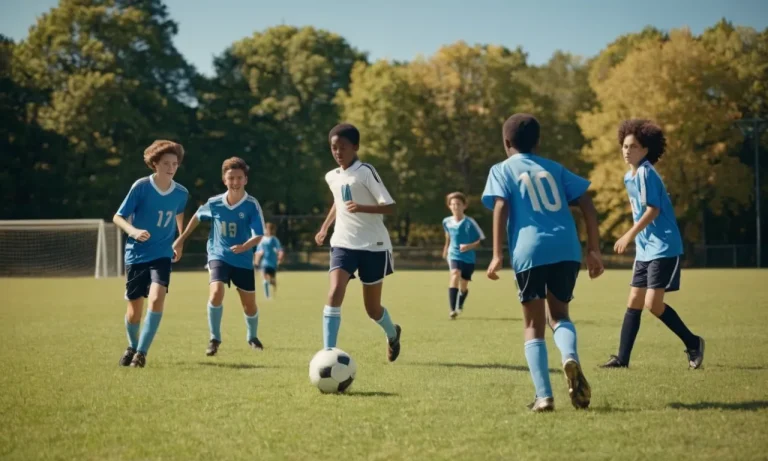In an era where technology has revolutionized the way we learn and explore the natural world, the age-old practice of dissecting frogs in schools has sparked a heated debate. For decades, this hands-on approach has been a staple in biology classrooms, providing students with a firsthand understanding of anatomy and physiology.
However, as ethical concerns and technological advancements emerge, the question arises: do schools still dissect frogs?
If you’re short on time, here’s a quick answer to your question: While some schools have phased out frog dissection due to ethical and environmental concerns, many educational institutions still incorporate this practice into their biology curricula, often providing alternatives for students who object to the procedure.
In this comprehensive article, we will delve into the intricacies of frog dissection in schools, exploring its historical significance, the ongoing debate surrounding its necessity, and the alternatives that are gaining traction in modern classrooms.
We will also examine the ethical considerations, environmental impact, and the role of technology in shaping the future of biology education.
The Historical Significance of Frog Dissection
The Origins of Frog Dissection in Education
The practice of frog dissection in educational settings dates back to the 19th century, when it was introduced as a hands-on approach to teaching anatomy and physiology. Frogs were chosen as the ideal specimen due to their relatively simple anatomy, making them an excellent starting point for students to understand the intricacies of biological systems.
This tradition has been carried on for generations, with countless students worldwide gaining firsthand experience in dissecting and examining the internal structures of these amphibians.
The Pedagogical Value of Hands-On Learning
Frog dissection has long been regarded as a valuable tool for promoting hands-on learning and fostering a deeper understanding of biological concepts. By physically handling the specimens and observing the various organs and systems up close, students can better comprehend the relationships between structure and function.
This practical approach complements theoretical lessons, allowing learners to visualize and internalize complex biological processes in a way that textbooks alone cannot achieve. Numerous studies have shown that hands-on activities like frog dissection can significantly enhance knowledge retention and comprehension, making it an invaluable educational resource.
Frog Dissection as a Rite of Passage
Beyond its pedagogical merits, frog dissection has also become a rite of passage for many students, particularly those pursuing careers in the life sciences or medical fields. The experience of carefully dissecting a preserved specimen, while initially daunting for some, instills a sense of confidence and familiarity with biological specimens.
It serves as a stepping stone towards more advanced dissections and surgical procedures, preparing students for the rigors of their future professions. For many, the memory of their first frog dissection remains a pivotal moment in their academic journey, a testament to their dedication and perseverance in the pursuit of knowledge.
Despite the rise of alternative methods, such as virtual simulations and 3D models, frog dissection continues to hold a significant place in modern education. According to a survey conducted by the National Association of Biology Teachers, over 80% of high school biology teachers still incorporate frog dissection into their curricula.
This enduring practice underscores the value placed on hands-on learning experiences and the recognition of frog dissection as a time-honored tradition in the field of biology education.
The Ongoing Debate: Ethical and Environmental Concerns
Animal Welfare and the Ethics of Frog Dissection
The practice of frog dissection in schools has sparked an ongoing ethical debate. While some argue that it serves as a valuable educational tool, allowing students to gain hands-on experience and a deeper understanding of anatomy, others raise concerns about animal welfare and the ethics of sacrificing living beings for educational purposes.
Proponents of alternative methods, such as virtual simulations or models, contend that modern technology can provide equally effective learning experiences without harming animals. According to a survey by PETA, over 60% of students expressed discomfort with dissecting frogs, highlighting the need for a more compassionate approach.
The Environmental Impact of Frog Harvesting
Beyond the ethical considerations, the harvesting of frogs for dissection purposes raises environmental concerns. Many species of frogs are already facing population declines due to habitat loss, pollution, and climate change.
The mass collection of frogs for dissection labs can further exacerbate these challenges, potentially leading to the depletion of local populations. According to a study by Center for Biological Diversity, an estimated 3 million frogs are dissected annually in the United States alone.
This staggering number highlights the need for responsible and sustainable practices to mitigate the environmental impact of frog harvesting.
Cultural and Religious Perspectives on Frog Dissection
The debate surrounding frog dissection also extends to cultural and religious considerations. For some communities, frogs hold symbolic or spiritual significance, and their dissection may be perceived as disrespectful or offensive.
Additionally, certain religious beliefs may conflict with the practice of dissecting living beings. It’s crucial to acknowledge and respect these diverse perspectives, fostering an inclusive learning environment that accommodates various cultural and religious backgrounds.
According to a study by Physicians Committee for Responsible Medicine, over 25% of students cited religious or cultural objections as a reason for not participating in dissection exercises.
As the debate continues, it’s essential to strike a balance between educational needs and ethical, environmental, and cultural considerations. By exploring alternative methods, promoting responsible practices, and fostering open dialogue, schools can create a more compassionate and inclusive learning environment while still providing valuable scientific education.
Ultimately, the decision to dissect frogs or embrace alternative approaches should be guided by a commitment to ethical, sustainable, and culturally sensitive practices.
Alternatives to Frog Dissection in Modern Classrooms
As ethical concerns and sustainability efforts continue to shape educational practices, many schools are exploring alternatives to traditional frog dissection in biology classrooms. While dissection has long been a staple in anatomy lessons, advancements in technology have paved the way for innovative, cruelty-free approaches that not only align with modern values but also provide engaging and effective learning experiences.
Virtual Dissection and Simulations
One of the most popular alternatives to physical dissection is the use of virtual dissection software and simulations. These digital tools offer a highly realistic and interactive experience, allowing students to explore the anatomy of various organisms, including frogs, without causing harm.
Leading educational platforms like BioDigital Human and Pearson’s Virtual Labs provide comprehensive virtual dissection resources that can be seamlessly integrated into classroom curricula.
3D Printed Models and Augmented Reality
The advent of 3D printing technology has opened up new possibilities for hands-on learning without the need for dissection. Highly detailed and accurate 3D printed models of various organisms, including frogs, can now be used in classrooms, allowing students to physically manipulate and examine anatomical structures.
Furthermore, augmented reality (AR) applications like Amira AR and Anatomy 4D are revolutionizing the way students interact with biological specimens, blending digital overlays with physical models for an immersive and engaging learning experience. 🤩
Ethical and Sustainable Alternatives
Beyond technological advancements, some schools are embracing ethical and sustainable alternatives to frog dissection. For instance, the use of ethically sourced animal specimens or plant-based models can provide valuable insights into anatomy without compromising ethical principles.
Organizations like Save Frogs USA and AnimaLearn offer resources and guidance on implementing humane and environmentally-friendly alternatives in classrooms. 👏
According to a 2019 study by the Humane Society of the United States, over 20% of schools nationwide have already adopted alternatives to animal dissection, with the trend steadily increasing. As technology continues to evolve and ethical considerations gain prominence, it’s clear that frog dissection is no longer the only viable option for teaching anatomy in modern classrooms.
By embracing these innovative alternatives, educators can provide engaging, interactive, and ethical learning experiences that align with contemporary values and foster a deeper appreciation for the natural world. 😊
The Future of Biology Education: Embracing Technology and Ethics
The Role of Technology in Enhancing Learning Experiences
As the world continues to evolve, so does the field of education. Technology has become an indispensable tool in the classroom, offering innovative ways to engage students and enhance their learning experiences.
In the realm of biology education, the integration of technology has opened up new horizons, allowing students to explore complex concepts and processes in a more immersive and interactive manner. From virtual dissections to augmented reality simulations, these cutting-edge tools provide a safe and ethical alternative to traditional hands-on methods, while still fostering a deeper understanding of biological systems.
One notable example is the BioDigital Human, a revolutionary platform that offers a 3D virtual model of the human body. This interactive tool allows students to explore the intricate structures and functions of various organs and systems, providing a level of detail and interactivity that was once unimaginable.
By leveraging such technology, educators can bring abstract concepts to life, captivating students’ curiosity and fostering a deeper appreciation for the complexities of life sciences. 🌟👏
Striking a Balance: Preserving Hands-On Learning and Ethical Considerations
While technology undoubtedly offers exciting opportunities for biology education, it is crucial to strike a balance between embracing these advancements and preserving the value of hands-on learning experiences.
Dissections, for instance, have long been a staple in biology classrooms, providing students with a tactile understanding of anatomical structures and reinforcing key concepts. However, ethical concerns surrounding the use of animal specimens have sparked debates and prompted a re-evaluation of these practices.
According to a PETA report, an estimated 3 million frogs are dissected annually in the United States alone. While some argue that dissections are an irreplaceable educational tool, others advocate for more humane alternatives that align with modern ethical standards.
Striking the right balance is crucial, as hands-on experiences can foster critical thinking and problem-solving skills, while also instilling a sense of respect for life and promoting ethical decision-making. 🤔
Adapting Curricula to Meet Modern Educational Standards
As the field of biology education evolves, it is imperative for educators and policymakers to adapt curricula to meet modern educational standards. This involves not only incorporating cutting-edge technology but also addressing ethical considerations and aligning teaching methods with current research and best practices.
By embracing a holistic approach, biology education can better prepare students for the challenges and opportunities of the 21st century.
One promising initiative is the BioInteractive program by the Howard Hughes Medical Institute, which provides a wealth of multimedia resources, including virtual labs, interactive simulations, and engaging videos.
These resources aim to enhance biology education by presenting complex concepts in an accessible and engaging manner, while also fostering critical thinking and problem-solving skills. By leveraging such resources, educators can create dynamic and inclusive learning environments that cater to diverse learning styles and promote active engagement.
😎👍
Conclusion
The debate surrounding frog dissection in schools is a complex one, intertwining ethical considerations, environmental concerns, and the pursuit of effective educational practices. While some institutions have embraced alternatives like virtual simulations and 3D printed models, others continue to uphold the traditional hands-on approach, citing its pedagogical value and historical significance.
As we navigate the future of biology education, it is crucial to strike a balance between preserving the essence of hands-on learning and addressing the ethical and environmental implications of frog dissection.
By embracing technological advancements and fostering open dialogues, educators can adapt curricula to meet modern educational standards while instilling a deep respect for life and the natural world in their students.
Ultimately, the decision to dissect frogs or explore alternative methods lies at the intersection of scientific inquiry, ethical principles, and a commitment to providing students with a comprehensive and engaging learning experience.
As society evolves, so too must our approach to biology education, ensuring that we equip future generations with the knowledge, skills, and ethical foundations necessary to navigate the complexities of the natural world.






